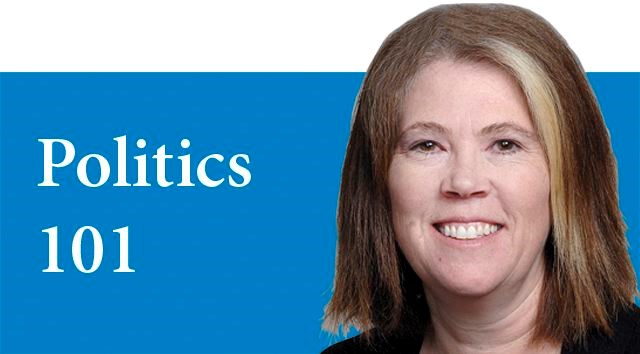For the past few weeks, I have been explaining different types of electoral systems. I want to apologize for the error in the math last week in explaining the STV quota system. It was kindly pointed out to me by a number of astute readers. The incorrect number should not have impacted the explanation of the "surplus vote" process.
This week, I want to talk about some mixed electoral systems and I will rely on the excellent work done by Fair Vote Canada. There are videos that I will reference for each system and I highly recommend them to you. Moreover, there are other videos available that describe systems I have been discussing over the last number of weeks.
Each of the videos is narrated by Dr. Dennis Pilon who is an associate professor of political science at York University. He is widely respected for his excellent scholarship on electoral systems.
The videos are easy to follow.
I would recommend using them if you are trying to explain the systems to young people who may be interested in following the electoral reform debates in Canada because the videos focus on Canadian examples and made-in-Canada electoral systems.
Here I summarize the Mixed Member Proportional and the Jenkins-Inspired MMP system as described in the videos.
I would also recommend that you watch the video that explains the Dion P3 system at: pgc.cc/2j0nuUx.
The Mixed Member Proportional system would have a reduced number of local ridings but add regional "top up" ridings.
So in the first video at:
pgc.cc/2hZpbEG, Pilon explains that the MMP system combines our system of first-past-the-post with a proportional system. In order to achieve this outcome, the number of local ridings would be reduced to 207. In order to elect 338 MPs in total, there would be 131 regional MPs elected from 27 "top up" regions. Thus the regions would be represented by a number of MPs representing a spectrum of parties. The top up regions would incorporate a group of local ridings. So, when voters go to the polls they will get two votes.
The first vote is for the local riding. The ballot would have the name of a candidate and their party affiliation does and we would select one individual from that list just as we do now.
The second vote would be for a regional candidate from an open list of candidates for each party.
The local riding MP would be selected just as they are now but the regional riding members would be selected by seeing how many representatives from each party need to be "topped up" to better represent the popular vote.
The second system described by Pilon is called the Jenkins Inspired MMP electoral system.
It can be found at:
pgc.cc/2jdo940e. The reason it is called "Jenkins Inspired," he explains, is because it has been adapted to increase the chances of a more proportional outcome. In a similar way to the MMP model described above, the Jenkins Inspired model uses top up regions and two votes (one of a local candidate and one for a regional candidate from an open list). The key difference is that the local candidate is chosen from a preferential ballot.
The Jenkins Inspired model asks voter to rank the local candidates by preference (1, 2, 3, etc.). Once the votes are counted, if no candidates has 50 per cent of the vote then the candidate with the least number of votes is eliminated from the running and their second place votes are shifted to the other candidates.
This "continues until a candidate gains a majority or until there are no more votes to be transferred."
The aim here is to make sure that the local representation is as accurate to voter preference as is possible. The rest of the seats are filled from the top up regions.
In the example describe by Pilon, in the Jenkins Inspired Model there would be 203 local MPs selected and 135 regional MPs from 42 top up regions.
The key with mixed member systems is that they try to combine a local, personal representative with a more proportional system. Their aim is to correct the fact that parties often do not receive the number of seats in the House of Commons proportional to their popular vote but mixed member systems also aim to have local representation.
Next week I will begin to look at the politics of electoral reform.



